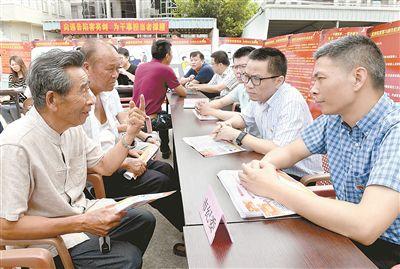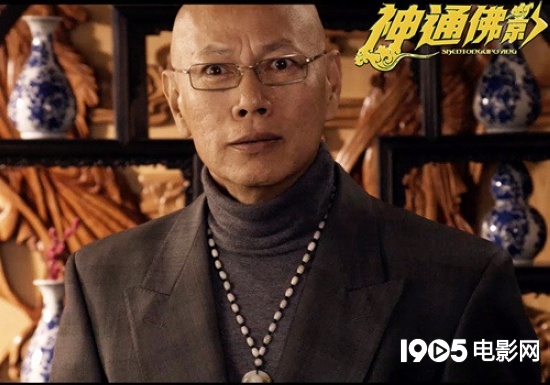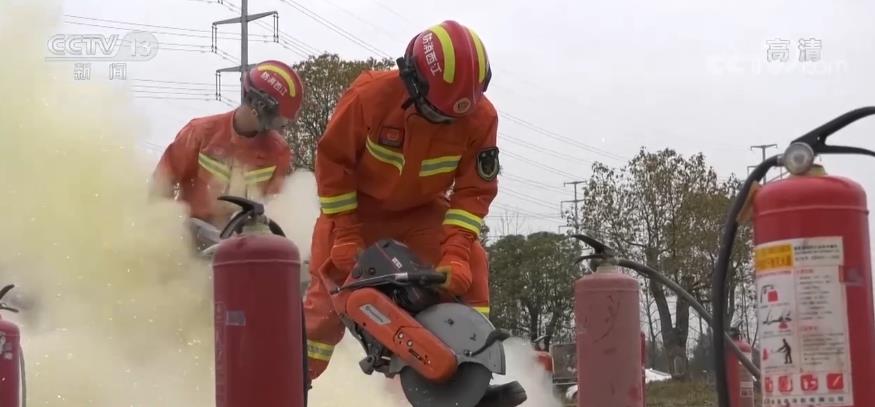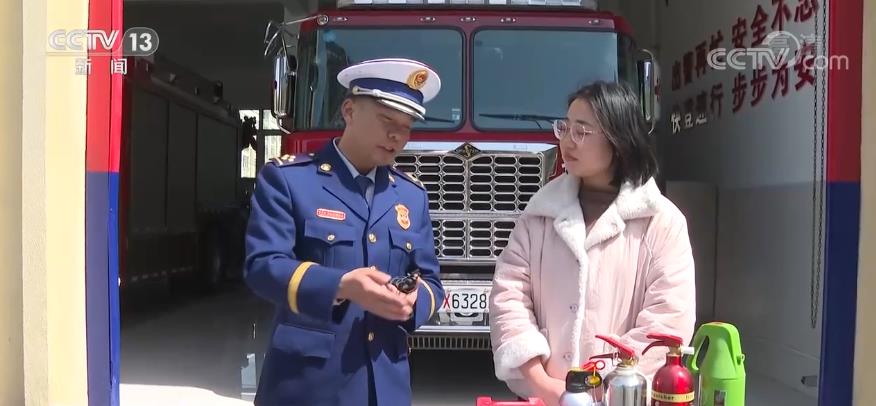[car home Information] At the beginning of the article, let’s sell it first. In this article, you will see the introduction of all the core new models of Huawei system, and we will also show the family map in the article. This paper will introduce you from three parts: sales volume, new technology and new models. Without further ado, let’s start the text.
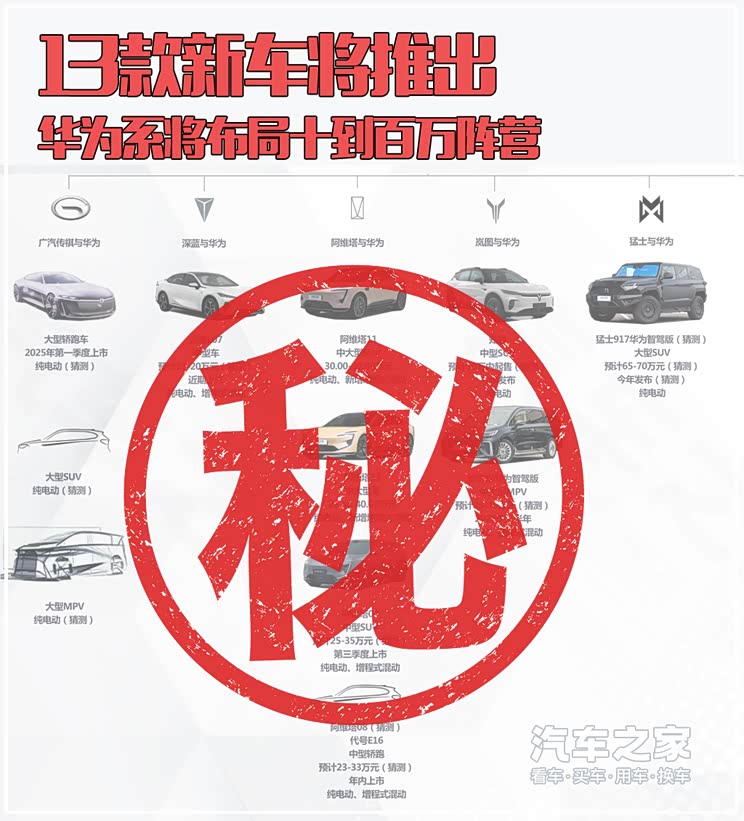
In the first half of 2024, Huawei HarmonyOS Zhixing refreshed everyone’s cognition: a new car was launched less than one year after it was launched, and the speed of pushing new products did not lose digital products at all. (|), M7 push new models every year, and every time it is not as small as traditional car companies push new models. This time, the new model M7 () has optimized the front face, replaced with 192-line laser radar, upgraded the sound system, upgraded the seat, and added CDC continuous variable damping shock absorber.
Even more outrageous is the intellectual S7. Due to Chery’s production capacity, the car was delayed, and after Chery adjusted its "status", Huawei held a press conference for it and upgraded its products. The two conferences were separated by just over four months, which was an unprecedented operation in the automobile circle.
● Sales volume: I didn’t expect it to be the best-selling model of Huawei.

"Ask the world M9"
Of course, there is something even more amazing. In the 136 days since its listing, the M9 has definitely exceeded 80,000 units. Treasures! This is a car with a price as high as 469,800-569,800 yuan. According to the latest data, in May, the M9 sold 16,462 units in a single month, which is the only brand in China. The era of BBA lying down to make money is really over!
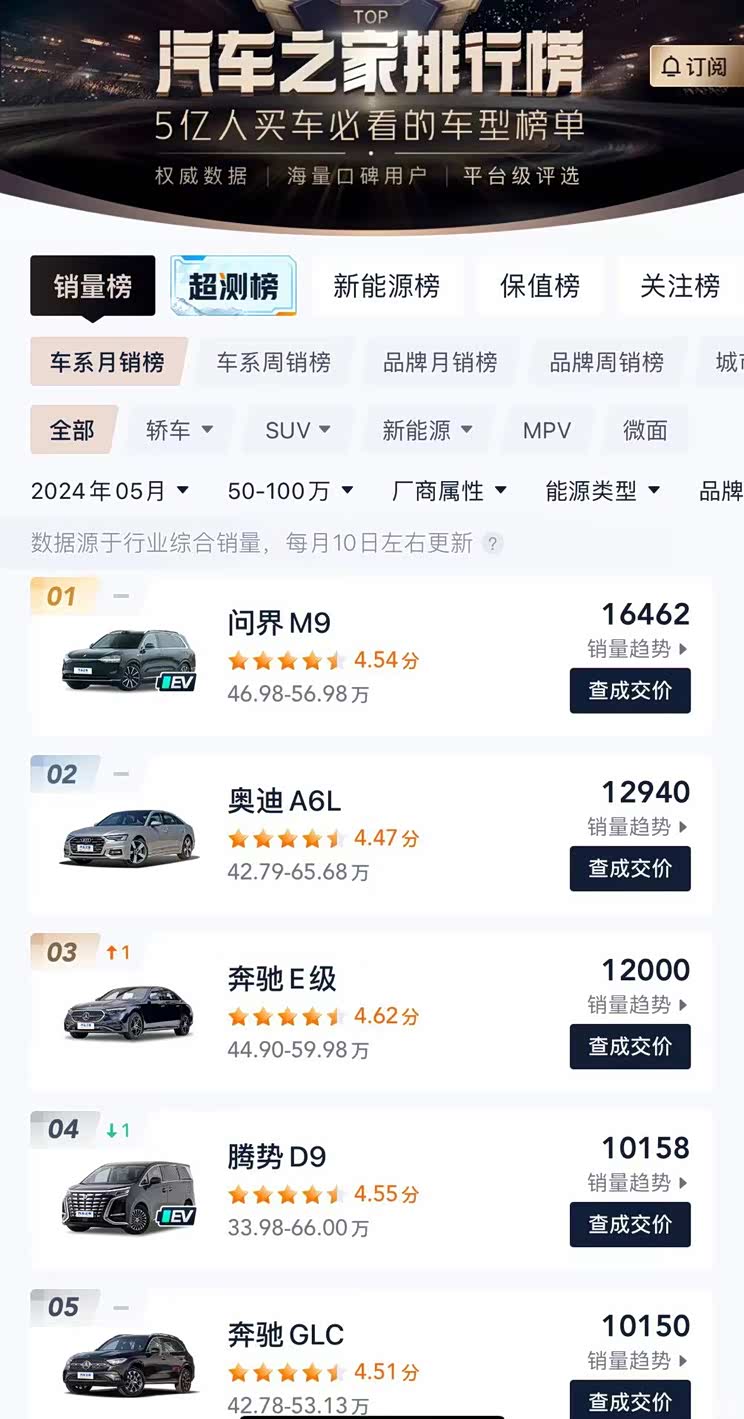
"Sales List of 500-100 Million Yuan Models"
If you open the car home sales list and choose the price range of 500,000-100,000 yuan, the sales volume of M9 in the world is "far ahead", even surpassing the Audi A6L, which ranks first in the list all the year round. The reason is that the M9 has the largest size and the most configuration among the same price models. Of course, Huawei is deeply involved in this car from research and development to sales. It is also a model with a high amount of "Hua" and can attract a lot of attention.

"HarmonyOS Zhixing Vehicle Sales List"
The M7 also has a monthly sales of over 10,000, which is a very cost-effective product in this price range. Intellectual S7 also has a good sales performance, and it has also created a good record shortly after its listing. Of course, not all models advertised as Huawei sell well. For example, the performance of the M5, which overlaps with the price of the M7, is relatively average. In addition, Aouita and Polar Fox, who chose Huawei HI mode, did not have much surprise in sales.

"Aouita Vehicle Sales List"
On the whole, I believe many people didn’t expect that the best-selling model among Huawei’s cooperative models turned out to be the most expensive model. We found that products with high content of "Hua" really sell well, technologically advanced models are highly sought after, unique products are easier to win, and hybrid models are more popular than pure electric models. Then, how many exciting new technologies and products are there in the "Huawei Family"? We will reveal them to you one by one.
● New technology: "Far ahead" again? Can parking spaces from the ground to the underground in the park also automatically assist driving?
Before talking about new products, it is necessary to talk about Huawei’s smart car solution Gankun, which is the latest technology that will be cited by smart car selection mode and HI mode cooperative models. The brands involved will include the current intellectual, intellectual and enjoyment circles of smart cars, as well as new brands that may be named as proud circles, and also include HI-mode Extremely Fox, Aouita, Deep Blue, Chuanqi, Lantu and Warrior.

Core highlight solutions include Gankun Intelligent Driving, HarmonyOS Cockpit, Gankun Vehicle Lighting, Gankun Vehicle Control and Gankun Vehicle Cloud Service. Of course, the most important thing here is Gankun Zhijia. Recently, ADS 3.0 has been newly upgraded. Compared with ADS 2.0, upgrading the GOD general obstacle detection network based on the integration of BEV bird’s eye view network will have stronger recognition and processing capabilities.

If expressed in Huawei’s way, it will continue to be "far ahead" in the field of smart driving. After this upgrade, the intelligent driving system has a faster response speed, and AEB is safer, which can truly realize the automatic driving from destination to destination. In addition, automatic parking is more powerful, and you can drive into the underground garage parking space without memory.
The new intelligent driving system can drive more like a real person, improve the traffic efficiency, improve the pass rate of complex intersections by 96%, and the end-to-end architecture can be enabled when there is a road. With the cooperation of 192-line laser radar and 4D high-precision millimeter-wave radar, it can cope with intelligent driving above L3 level, and it can also easily cope with rainy and foggy weather. At the same time, ADS 3.0 can realize intelligent driving and pilot NCA from parking space to parking space, and can reach with one button, and can realize automatic assisted driving from open roads to park roads and from the ground of the park to underground parking spaces. When everyone is still driving in NOA city, Huawei has already rolled into a new realm of "end-to-end" in advance.

At the same time, parking supports leaving the car, and these operations do not need to remember parking, and even can be parked in extremely narrow parking spaces that old drivers can’t complete. When the braking distance of AEB is not enough, the system can avoid obstacles under the premise of safety, and can be upgraded from forward object recognition to oblique crossing and crossing bicycles. This seems to be more in line with the road conditions in China. Automatic parking and AEB can no longer be used under certain conditions, and their practicability is greatly enhanced.

HarmonyOS cockpit is the most impressive one for everyone. This time, we upgraded the model of Qianwu engine, which can sense every passenger in the car and accurately push preferences. Gankun Audio brings an immersive experience, and can actively reduce noise, and can realize front and rear isolation sound shields, and the video in the front row and the back row is complementary to each other. Gankun car smart screen has a comprehensive screen with 2K resolution and 87% screen ratio. Needless to say, the operation of HarmonyOS cockpit, this upgrade, will bring a better audio-visual effect experience.

The vehicle-mounted lighting in Gankun is reflected in three aspects. The intelligent car light module can be projected to the corresponding warning picture on the road to remind pedestrians or drivers, and can also be used as a slide projector to project to the black-and-white image picture on the wall. The second is augmented reality head-up display, which can provide route display of AR real-life navigation in combination with real scenes, which is more intuitive. The third is the light field screen, which can break through the physical space limitation in the car and realize the imaging of 40-inch super-large frame at 3 meters. It is also a profound experience.
Gankun vehicle control is intelligent, providing a safe, comfortable and energy-saving driving experience. Gankun Che Yun is to build intelligent, safe and reliable cloud services for smart cars.

In general, the most eye-catching technology is still ADS 3.0. Huawei Gankun ADS 3.0 has laid the foundation for the continuous evolution of the end-to-end architecture. Relevant persons said that end-to-end will bring about a double improvement in the autopilot experience and performance, and consumers will be more willing to accept autonomous driving, thus increasing the penetration rate of autonomous driving. End-to-end can think like human beings and give the best solution. At present, Tesla FSD V12 has realized the end-to-end neural network model. Musk also said that its subscription volume has greatly increased after V12 was pushed, and the industry speculated that the proportion of its subscribers has increased from 2% to 20%, which proves that such a smart driving system is more practical.
These new technologies will be applied to new models regardless of smart car selection or HI mode. In addition to the models we know at present, many new models have been added, and many HI models have been added.
● New models: HarmonyOS Zhixing (intelligent car selection) +HI mode Next, 13 new products will be announced.
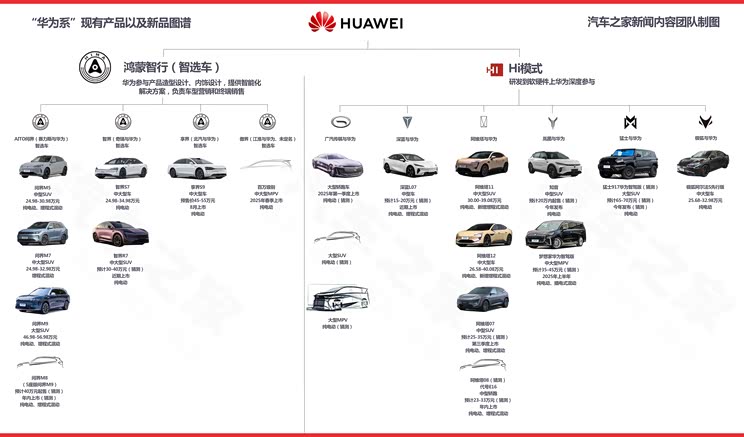
We have probably drawn the current cooperative models of Huawei and the new models that are known to be launched at present, reaching a total of 20 models. After all the models are listed, the scale is really huge, covering more than 100,000 to one million models at all levels. Let’s take a look at the brands one by one. First, let’s take a look at the new products of HarmonyOS Zhixing (intelligent car selection mode).
HarmonyOS Zhixing (Zhixuanche)

○ Cyrus and Huawei
AITO Boundaries M8(5-seat Edition Boundaries M9)
Price:It is estimated that the sale will start at 400,000 yuan (guess)
Time to market:Listing during the year (guess)
Energy type:Pure electric, extended range hybrid
After Celestial and Huawei launched the new model M5, M7 and M9 in the past six months, it is expected to launch a model M8. Although this car has not been made public, its spy photos have been flying all over the sky. According to a sales representative of HarmonyOS Zhixing, this car may be a new version of M9, a smaller M9, and it will be named M8 according to the internet.




"Ask the world M8"
Judging from the spy photos, its design is highly similar to that of the asking world M9. It is a five-seat version of the asking world M9, and its front, rear and interior are highly similar to that of the asking world M9. I didn’t expect that Cyrus, who challenged the ideal all the way, also embarked on the route of "nesting dolls". The positioning of M9 and M8 is very similar to L9 and L8, which will also use all the most advanced technologies of Huawei, including smart lens headlights, HarmonyOS cockpit, rear projection, car refrigerator, Turing chassis, ADS 3.0 intelligent driving and so on. Of course, make a bold prediction, will the starting price of M8 be less than 400,000 yuan? What do you think? Of course, this may also be another ideal model of Huawei.
Chery and Huawei
Zhijie R7
Level:Medium and large SUV
Price:Estimated 300,000-400,000 yuan (guess)
Time to market:Recently listed
Energy type:Pure electric
After the launch of S7 by Chery and Huawei’s Zhijie, the second car is a very dynamic SUV R7, which adopts a coupe body design and is expected to sell for 300,000-400,000 yuan. However, considering that the price of Zhijie S7 is against Tesla Model 3, the final pricing of Zhijie R7 is likely to be against Tesla Model Y, which may bring us price surprises.



『Zhijie R7』
Of course, the size of this car is 4956mm and the wheelbase is 2950mm, which is obviously larger than Model Y. However, in design, the intellectual realm R7 is more like the elevated intellectual realm S7, and the design language is exactly the same. Judging from the exposed interior, it is also highly similar to S7. Of course, the new car will also be equipped with Huawei’s latest technologies, such as ADS 3.0 Intelligent Driver, a new generation of HarmonyOS Cockpit, Car Cloud Service 3.0, brand-new AR-HUD, Megapixel Intelligent Lamp Module, etc. At the same time, it will also be equipped with an 800V silicon carbide high-voltage platform as standard as S7. Obviously, this car is aimed at Tesla Model Y. At present, HarmonyOS Zhixing is one of the biggest markets for cakes, which must not be missed.
○ BAIC and Huawei
Xiangjie S9
Level:Medium and large car
Price:The pre-sale price is 450,000-550,000 yuan.
Time to market:Listed in August
Energy type:Pure electric
Enjoy the world S9 is another new member of Smart Car, which is jointly launched by BAIC and Huawei. Its pre-sale price is 450,000-550,000 yuan, and it will be listed in early August. Enjoy the world S9 body size of 5160/1987/1486mm, wheelbase of 3050mm, and this car size is relatively close to the model is Weilai ET7, positioning medium and large cars.



『Xiangjie S9』
Turing chassis, ADS 3.0 intelligent driver and brand-new HarmonyOS cockpit will not be absent from this car, and it is expected to be the same as the M9, but its rear row will provide more luxurious equipment. From the information that has been exposed, the rear row of the new car will adopt a four-seat layout, equipped with zero-gravity seats, with massage, heating and ventilation functions, and the rear row seats are expected to be "flat" with a large inclination angle, providing a small table and a warm and cold armrest box. At the same time, the rear row will be equipped with a car-gauge laser projector, electric projection curtain and HUAWEI SOUND SUPERIOR panoramic sound, and all four windows will be equipped with double-layer laminated sound insulation glass. Power on the new car to provide single and double motor version, the maximum battery life of more than 800km. At present, the middle and high-end electric cars have not sold particularly well, and the Enjoy S9 is a breakthrough. Of course, its strength will be the same as that of the Ask M9, relying on all the new technologies of Huawei to attract consumers.
Huawei and JAC
Aojie (unnamed)
Price:Million level
Level:Medium and large MPV
Time to market:Listed in the spring of 2025
Energy type:Pure electric
Huawei and JAC are another member of Smart Car. Previously, it was rumored that the new brand was called Aojie, and the products would be millions. According to the EIA report released by JAC, the cooperation project with Huawei will be built on the brand-new X6 luxury new energy platform, and the models will cover B-class to D+ class, including cars, SUVs, MPVs, crossover vehicles, sports vehicles, etc., sharing platform development.
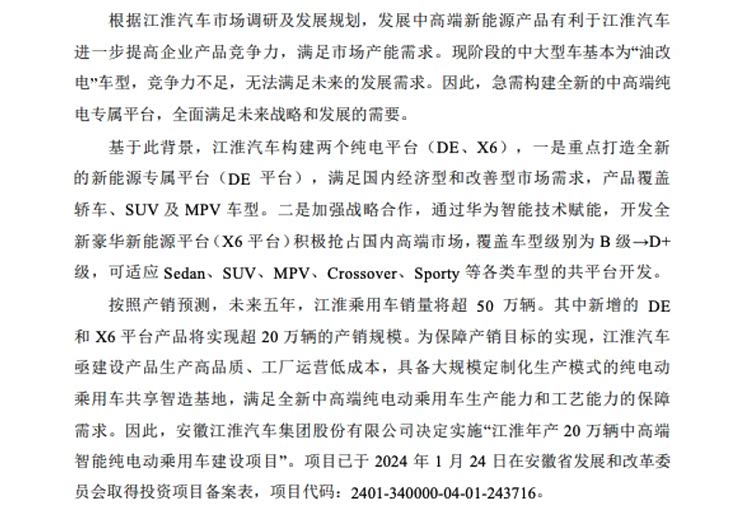


『Jianghuai product planning』
According to the plan, the first model produced by X6 platform may be an MPV with a length of 5.2 meters and a wheelbase of 3.2 meters. The planned annual production capacity is 35,000 vehicles, and the new car will be launched in the spring of 2025. This news was also confirmed by a HarmonyOS Zhixing salesman, and the new car will be a million-level MPV. At present, Huawei does not have a million-class model. This MPV will be a brand-new attempt. Of course, this car will definitely have a surprising product experience. We look forward to the official answer.
In terms of intelligent car selection, HarmonyOS Zhixing has covered all aspects. Aojie mainly focuses on millions of consumption, and Wenjie M9, Wenjie M8 and Xiangjie S9 mainly focus on the middle and high-end luxury car market of 400,000-500,000 yuan, while Zhijie S7, Zhijie R7, Wenjie M5 and Wenjie M7 mainly focus on the entry-level luxury car market of 250,000-400,000 yuan. Cars, SUVs and MPVs have been fully covered. Of course, for Huawei, it is not enough. Next, let’s take a look at the cooperation of HI mode. Although it is not sold in HarmonyOS Zhixing terminal, it will also match Huawei’s latest technology.
HI mode

○ GAC Chuanqi and Huawei
The first car:Large coupe
Time to market:Listed in the first quarter of 2025
Energy type:Pure electric (guess)
Other models:Large pure electric SUV and large pure electric MPV
At this year’s Beijing Auto Show, the new model of Guangzhou Automobile Chuanqi Spoiler will be equipped with Huawei’s latest Gankun smart car solution, using Gankun ADS 3.0 and a new generation of HarmonyOS cockpit. Subsequently, large cars, large SUVs and large MPVs based on Huawei’s next-generation technology will be launched, and the first model will be launched and delivered in the first quarter of 2025.

『Guangzhou Automobile Chuanqi and Huawei Product Planning』

『Guangzhou Automobile Chuanqi and HuaweiConcept car design of the first model』
Just a few days ago, GAC Chuanqi revealed the concept car design of the first model, which looks more like a two-door coupe. Of course, this is only a concept car. The production version is expected to be a five-door model with a high probability, but it shows that this car will be a coupe design concept. Compared with several smart cars, this model is more distinctive, showing the unique product characteristics of GAC Chuanqi. At present, there is no specific price positioning of this model, but it may be a model with the same positioning as the Enjoy World S9 by visual inspection, which will produce differentiated products.
Deep blue and Huawei
Deep blue L07
Level:in-between car
Price:Estimated 150,000-200,000 yuan (guess)
Time to market:Listed during the year
Energy type:Pure electric, extended range hybrid
After Aouita, Deep Blue also joined Huawei’s camp. Of course, Deep Blue is also a HI model. The first cooperative model L07 looks very close to Deep Blue SL03. Deng Chenghao, CEO of Deep Blue Auto, said that compared with SL03, L07 has a new appearance, a new interior, a new power and a new configuration ratio. SL03 focuses on sports technology and L07 focuses on intelligent technology. However, from the official map of L07, it is more like an improved product of SL03.


Deep blue L07』
The official said that the L07 is a model with deep cooperation with Huawei, with intelligent technology as the core, giving users a refreshing intelligent driving experience. The landing of Deep Blue L07 will become the most intimate product equipped with Huawei intelligent system, which may cost as little as 100,000 yuan. Of course, considering the price factor, it may not be equipped with Huawei Gankun ADS 3.0, but Huawei has also launched an ADS SE version for low-end models, which will have no urban intelligent driving and support high-speed NCA and intelligent parking. It is expected that Deep Blue L07 will probably be equipped with this system, and it is also expected to introduce HarmonyOS cars.
Deep Blue L07 will be Huawei’s first model with a price of more than 100,000 yuan. Its listing will go deep into BYD’s current main market. Comparatively speaking, BYD’s current weakness is in the field of intelligent driving. Of course, BYD has spent a lot of money on research and development. In this gap period, Huawei models still have a chance to get a share.
○ Aouita and Huawei
Aouita 07
Level: medium SUV
Price: estimated 250,000-350,000 yuan (guess)
Time to market:Listed in the third quarter
Energy type:Pure electric, extended range hybrid
Aouita was one of the earliest car companies to cooperate with Huawei. Compared with Extreme Fox, Aouita has made every product equipped with Huawei’s intelligent driving system, and the following new products will continue this feature. The good news is that Aouita will start the route of extended-range vehicles, and the price is expected to be further reduced. Both Aouita 11 and 12 will launch extended-range hybrid vehicles. According to the declared information, the two models will use 1.5T engines as the range extender.


"Aouita 07"
At the same time, Aouita will also launch an SUV model Aouita 07 with a slightly larger size than Tesla Model Y. In terms of body size, its length, width and height are 4825/1980/1620(1610)mm and its wheelbase is 2940mm respectively. It will also have HarmonyOS cockpit and Huawei advanced intelligent driver, and its price will be much lower than that of Aouita 11. At the same time, this model will also be driven by extended range and pure electric. The pure electric version provides two-wheel drive models and four-wheel drive models. The former is equipped with a driving motor with a maximum of 252 kW, and the latter is equipped with a dual motor with 188 kW before and 252 kW after. The extended-range version is equipped with a 1.5T engine with a maximum power of 115kW. As for the motor, the two-wheel drive version is equipped with a single motor with a maximum power of 231kW, and the four-wheel drive version is equipped with a dual motor with a maximum power of 131kW and a maximum power of 231kW.
Aouita 07 is another model aiming at Tesla Model Y besides Zhijie R7. At the same time, it also has extended-range models, and it can grab some markets of ideal L6 together with Wenjie M7, killing two birds with one stone.
Aouita 08 (guess) code E16
Level:Medium coupe
Price:Estimated 230,000-330,000 yuan (guess)
Time to market:Listed during the year
Energy type:Pure electric, extended range hybrid
In addition, Aouita will launch a model with the benchmark Tesla Model 3, which is cheaper than the model 12. The power form of E16 is also expected to include pure electricity and extended range. Please refer to Aouita 07.


Aouita E16』
At the end of last year, Huawei and Changan set up a joint venture company to jointly develop intelligent driving solutions, intelligent cockpit, intelligent digital platform, intelligent Che Yun, AR-HUD and intelligent lights. Huawei will further cooperate with Changan to create customized products for Changan.
○ Lan Tu and Huawei
Lan tu zhi yin
Level:Medium SUV
Price:It is expected to be sold within 200,000 (guess)
Time to market:Released this year
Energy type:Pure electric
This year, Lantu has publicly stated that the new pure electric SUV model built by Lantu and Huawei will be released this year, and this model is likely to be a bosom friend. At the same time, Lantu Dreamer, the industry’s first MPV model equipped with Huawei’s intelligent driving and intelligent cockpit, will also be launched in the first half of next year.



"Lan Tu bosom friend"
According to Lu Fang, CEO of Lantu Automobile, Lantu Zhiyin will be equipped with the strongest Sandian in the industry, the strongest cockpit in Lantu and the strongest intelligent driving in the world. From the description point of view, its high probability is the SUV that Lantu cooperates with Huawei. And the map said that this SUV will help increase the sales of the map, indicating that this model may have a more surprising price. With reference to the pricing of the map FREE, this car is likely to start selling within 200,000 yuan because of its smaller size.
Zhiyinhui is a brand-new entry-level product of Lantu. Its model size is 4725/1900/1636(1653)mm, and its wheelbase is 2900 mm.. Its size is obviously smaller than that of Lantu FREE, which is close to that of Tesla Model Y, and it is positioned as a medium-sized SUV. The interior design of the car is also relatively simple, with only a central control panel and a narrow dashboard. At present, it is known that this model will be a pure electric model with a 230 kW motor.
Companion will probably become another SUV model with a price of 200,000 yuan after Deep Blue L07. Of course, its pricing may be higher than that of Deep Blue L07, and there will be no direct competition. The price of the main model may still exceed 200,000 yuan.
Lan tu Meng Jia Hua Wei zhi Jia ban
Level:Medium and large MPV
Price:Estimated 350,000-450,000 yuan (guess)
Time to market:The first half of 2025
Energy type:Pure electric and plug-in hybrid

"Lan Tu Dreamer"
Lantu Dreamer will also be equipped with ADS 3.0 and a new generation of HarmonyOS cockpit, which will also become the first MPV in Huawei’s intelligent driving system. Dreamer is also expected to be the first MPV cooperated by Huawei. After cooperating with Huawei, the product competitiveness of Dreamer will be greatly enhanced, and it will attack the MPV market that Tengshi D9 has been occupying.
Warrior and Huawei
Warrior 917 Huawei Intelligent Driving Edition (guess)
Level:Large SUV
Price:Estimated 650,000-700,000 yuan (guess)
Time to market:Release this year (guess)
Energy type:Pure electric
The new products of Warrior and Huawei have not been officially disclosed yet, but the official said that the cooperation between Warrior and Huawei will open a new era of luxury electric off-road intelligence in China. Therefore, the cooperative model will still be a model that deeply cultivates the luxury off-road market. It may be a 917, or it may be a new model. It will make off-road vehicles more intelligent and enter the previous blank market.

Warrior 917
It can be seen that after the HI model is joined, the product prices of Huawei cooperation will be more comprehensive, especially in the price range of 150,000-300,000 yuan, and more products will be launched. At the same time, compared with the similar product styles of HarmonyOS Zhixing family, HI mode models will also introduce more differentiated models, bringing more products and forming complementary advantages.
In addition to the above products and models, Huawei has previously signed contracts with brands such as Zero Run and Kaiyi, but the scope of cooperation will be smaller and will not involve the research and development of vehicle products. Zero Run will enable HarmonyOS native Application development on its app. Kaiyi jointly develops smart car life services based on Huawei’s terminal cloud application ecology, AI and smart full-scenario services, and payment services.
Write at the end:
Huawei’s family is growing and becoming a force to be reckoned with in the industry. Both HarmonyOS Zhixing and Hi model have rapidly expanded Huawei’s influence in the automobile industry, and indeed brought many phenomenal products. And perhaps the models we introduced today are just the tip of the iceberg. With the breakthrough of sales of more Huawei models, perhaps more new models will join. (Text/car home Qin Chao)

